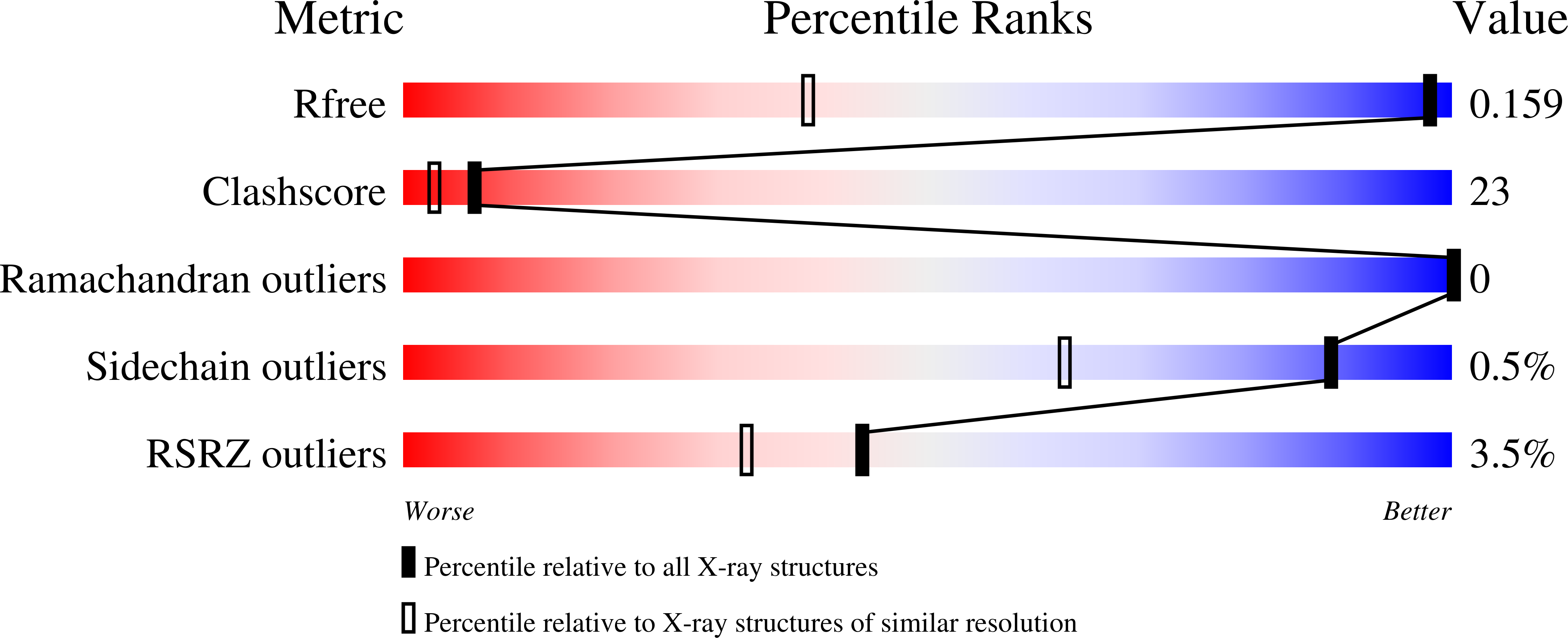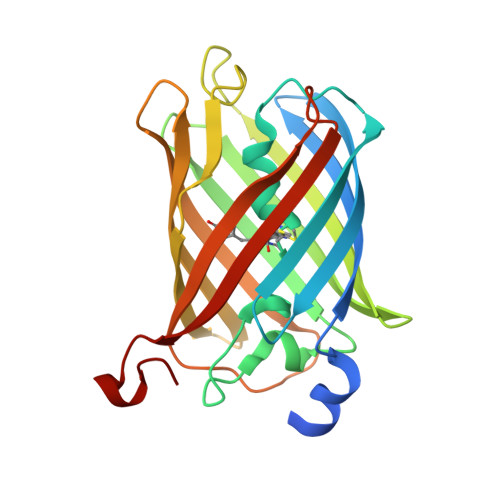Generation of longer emission wavelength red fluorescent proteins using computationally designed libraries.
Chica, R.A., Moore, M.M., Allen, B.D., Mayo, S.L.(2010) Proc Natl Acad Sci U S A 107: 20257-20262
- PubMed: 21059931
- DOI: https://doi.org/10.1073/pnas.1013910107
- Primary Citation of Related Structures:
3NED, 3NEZ - PubMed Abstract:
The longer emission wavelengths of red fluorescent proteins (RFPs) make them attractive for whole-animal imaging because cells are more transparent to red light. Although several useful RFPs have been developed using directed evolution, the quest for further red-shifted and improved RFPs continues. Herein, we report a structure-based rational design approach to red-shift the fluorescence emission of RFPs. We applied a combined computational and experimental approach that uses computational protein design as an in silico prescreen to generate focused combinatorial libraries of mCherry mutants. The computational procedure helped us identify residues that could fulfill interactions hypothesized to cause red-shifts without destabilizing the protein fold. These interactions include stabilization of the excited state through H-bonding to the acylimine oxygen atom, destabilization of the ground state by hydrophobic packing around the charged phenolate, and stabilization of the excited state by a π-stacking interaction. Our methodology allowed us to identify three mCherry mutants (mRojoA, mRojoB, and mRouge) that display emission wavelengths > 630 nm, representing red-shifts of 20-26 nm. Moreover, our approach required the experimental screening of a total of ∼5,000 clones, a number several orders of magnitude smaller than those previously used to achieve comparable red-shifts. Additionally, crystal structures of mRojoA and mRouge allowed us to verify fulfillment of the interactions hypothesized to cause red-shifts, supporting their contribution to the observed red-shifts.
Organizational Affiliation:
Division of Biology, California Institute of Technology, 1200 East California Boulevard, Pasadena, CA 91125, USA.



















